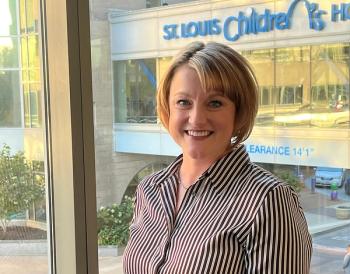
Hospitals Face “Survival Mode,” as Pandemic Lingers But Need for Care Returns
Hospitals face both operational and financial challenges as the pandemic heads past the 12-month mark, according to a report based on interviews with 320 hospital administrators in 45 states.
America’s hospitals are in “survival mode,” as the number of COVID-19 cases dipped but did not stop from early winter peaks, according to a
Hospitals face both operational and financial challenges as the pandemic heads past the 12-month mark, according to the report, which is a “pulse” report based on interviews with 320 hospital administrators in 45 states. The interviews occurred February 22-26, 2021, as the country neared the 1-year anniversary of the World Health Organization declaration of a global pandemic, which occurred March 11, 2020.
The administrators reported staffing shortages, low morale, and disparities in access and to care and outcomes. COVID-19 patients with complex needs are still arriving, and now patients who deferred care for diabetes or cardiovascular disease are returning, much sicker than they were before the pandemic. Patients who put off cancer screenings are being diagnosed at later stages, requiring more complex and expensive care. The need for mental health services has soared.
At the same time, elective surgeries and procedures were canceled or deferred for months, depriving hospitals of needed revenue at a time when other costs were rising. As the survey took place, administrators were still vaccinating staff, and dealing with those who were hesitant.
Technology: Boon and Barrier
Telehealth, for all its value in keeping care going, is not a cure all, hospitals report. According to the report, “Telehealth, by its very nature, cannot cover all aspects of health care delivery. Administrators also reported “that some patients, particularly those in underserved communities, do not have the devices or internet access to conduct video calls.”
For rural hospitals, every challenge is experienced to a greater degree. The OIG report said getting everyone vaccination in rural areas is especially difficult, because seniors and low-income persons may not have internet access or technology skills to navigate online scheduling. Strategies used elsewhere—such as sharing staff and technology—are not possible in remote areas.
Most of all, the administrators warned, the fallout of the pandemic will last for months, even years. Delayed care will mean higher hospitalization rates and need for more complex patient needs in the future. Behavioral health needs will continue to grow, not just for patients but for staff as well.
“Hospitals reported that increased hours and responsibilities, along with other stressors caused by the COVID-19 pandemic, resulted in staff being exhausted, mentally fatigued, and sometimes experiencing possible post-traumatic stress disorder (PTSD),” the report said. “Several hospitals reported that witnessing COVID-19-related deaths especially weighed on staffs’ mental health.”
Adding to the stress are nursing shortages, caused in part by competition for staff willing to travel to hospitals that are paying higher rates for travel nurses to fill gaps. This has raised concerns about care quality and disparities based on the ability of some hospitals to compete in this labor market frenzy.
Resources Under the Rescue Act
The report outlined specific items in the American Rescue Plan Act of 2021 aimed at hospitals and the healthcare workforce:
- $6.05 billion for research, development, manufacturing, production, and purchase of vaccines, therapeutics, and other medical products used in the COVID-19 response.
- $7.6 billion to qualified community health centers to support their COVID-19 response, including distribution of COVID-19 vaccines and purchasing equipment to conduct mobile vaccinations.
- $8.5 billion toward payments to eligible rural health care providers for related expenses and lost revenues as a result of COVID-19.
- $7.66 billion to state, local, and territorial public health departments that may be used to cover areas such as wages, recruitment, personal protective equipment, and necessary administrative costs and activities.
- $200 million to support scholarship and loan repayment for nursing students and nurses.
- $80 million for grants to support planning, developing, operating, and participating in training activities to reduce and address suicide, burnout, mental health conditions, and substance use disorders among health care professionals.
- $20 million to support a national campaign for healthy work conditions and the use of mental health and substance use disorder services by health care professionals, and $40 million for grants to promote mental health among the health professional workforce.
The report also discussed the priority given to healthcare workers in gaining access to vaccines.
More Can Be Done
The hospital leaders had more suggestions for government help, such as:
- More frequent and consistent guidance on treating patients with and without COVID-19, as well as those who have been fully vaccinated.
- More information on emerging variants.
- Updated recommendations for screening.
- More education on long-erm health impacts of COVID-19.
- More money and attention to undeserved communities to address disparities in care.
- Telehealth for specialty services, such as pulmonology.
- More efforts for new delivery models, such as in-home care, collaborations between schools and hospitals, and licensure waivers for out-of-state service delivery.
- Broader public education efforts to promote vaccination.
















































